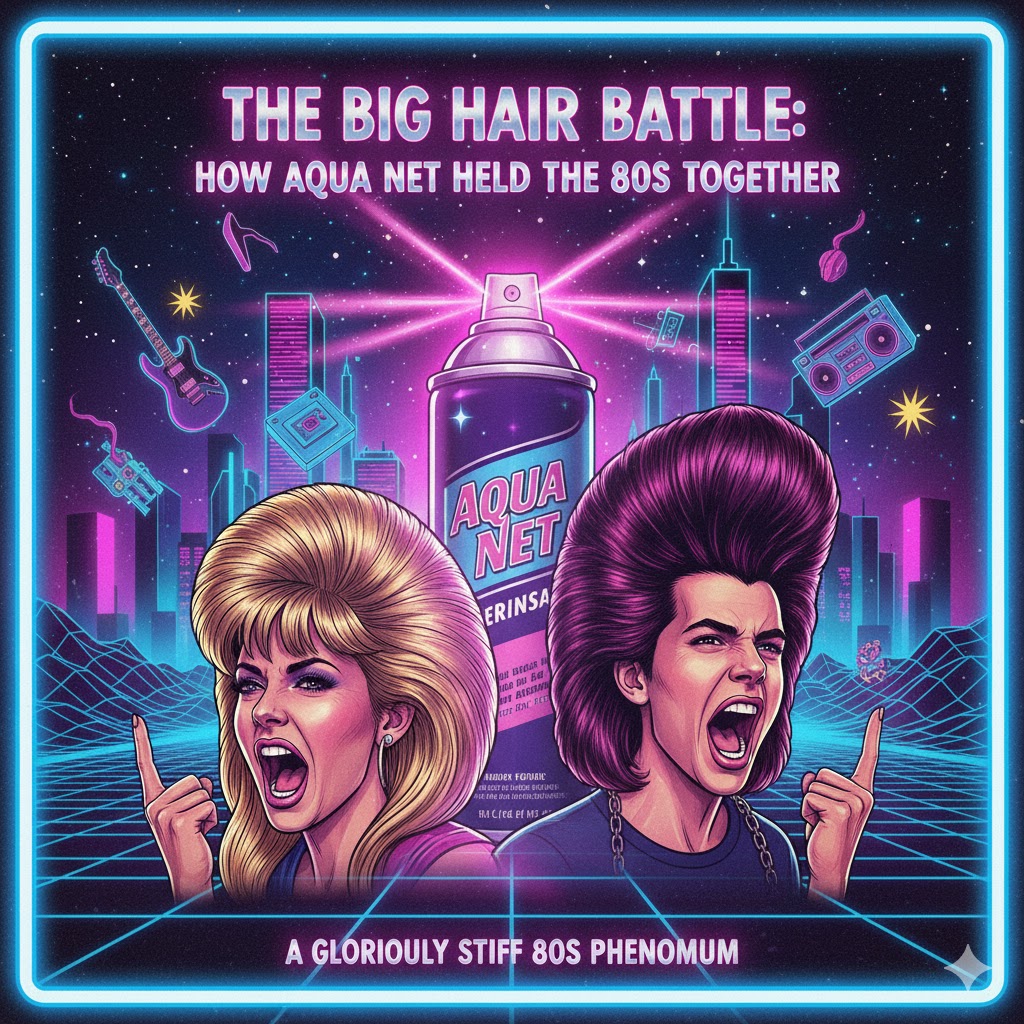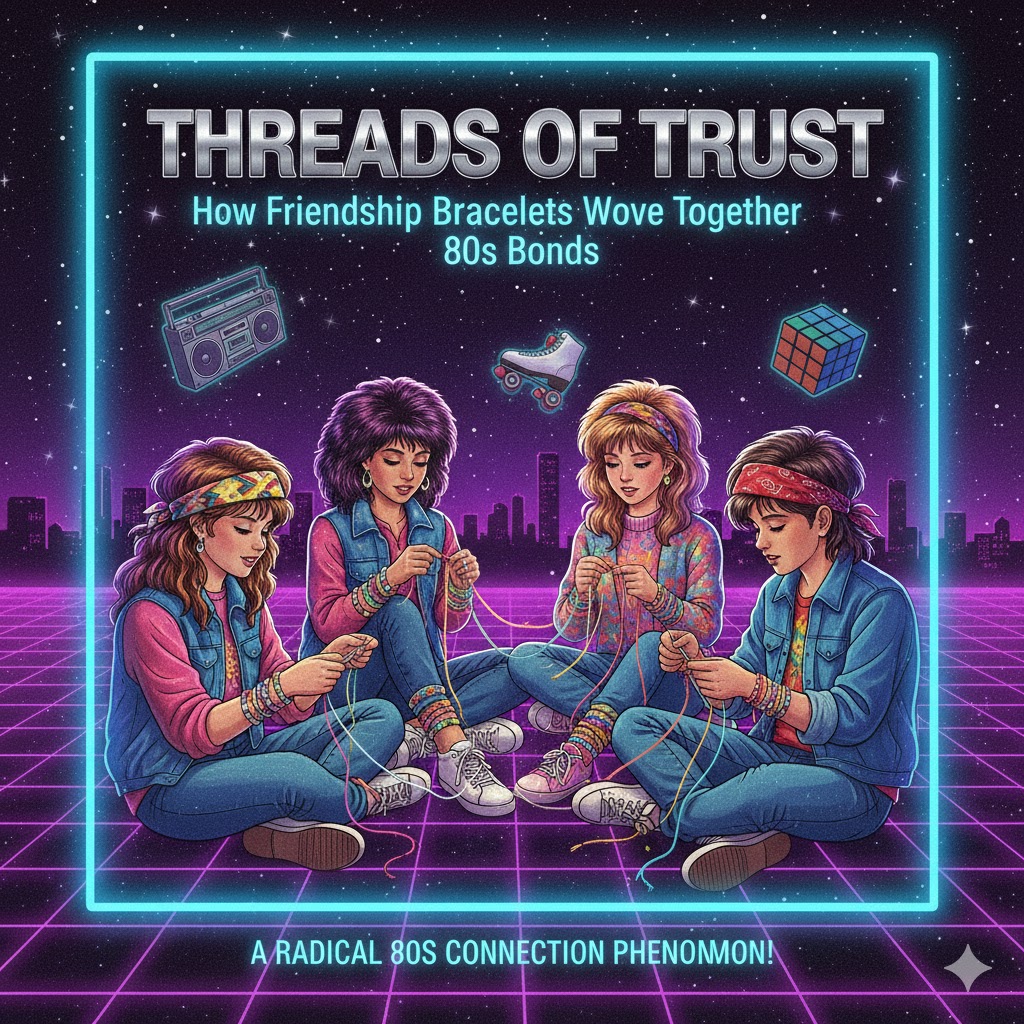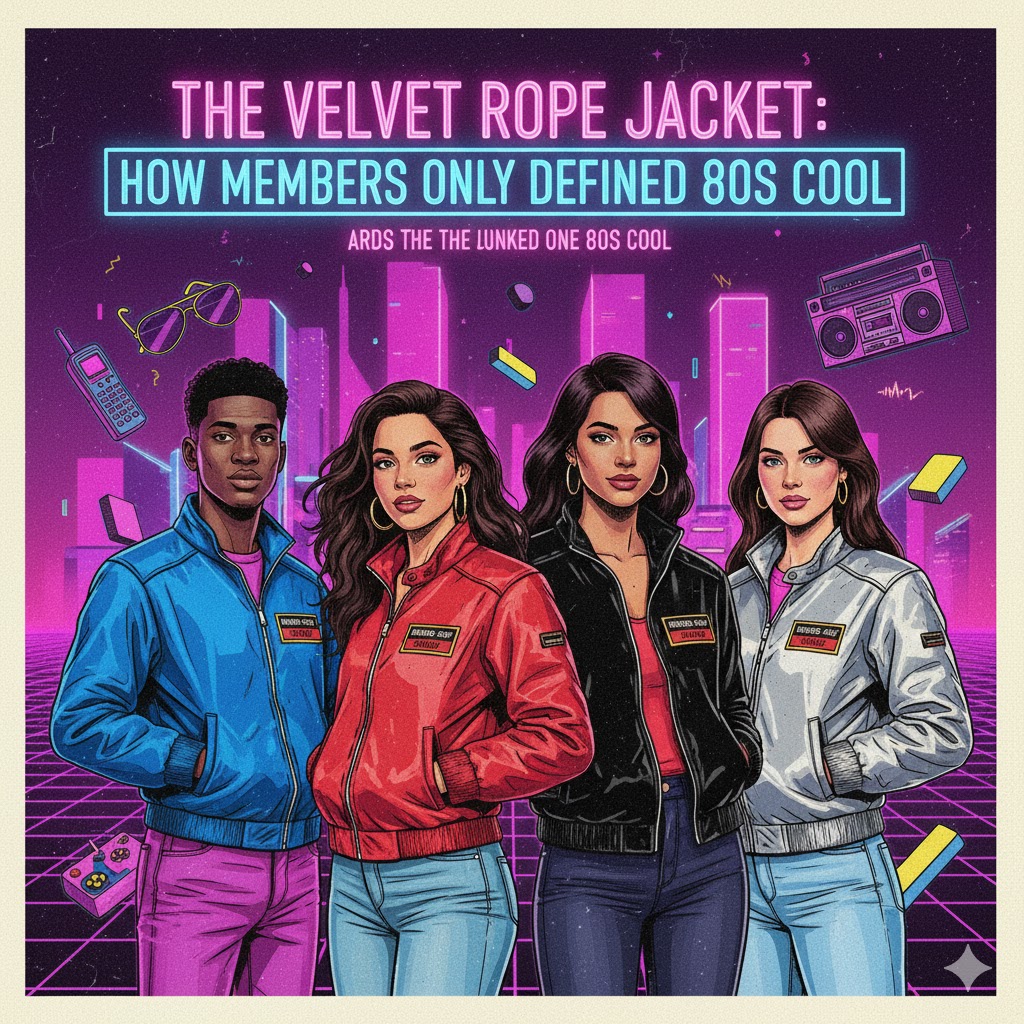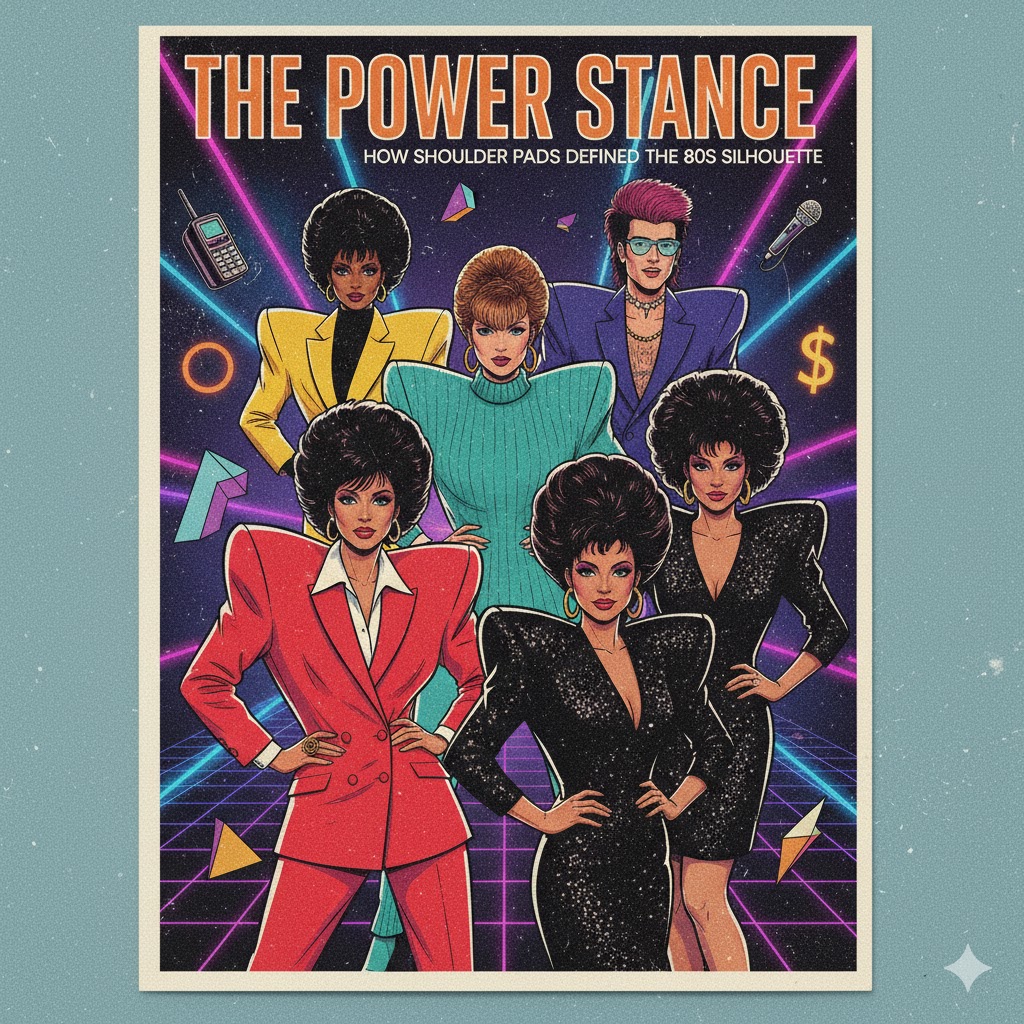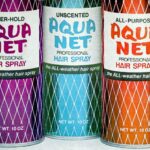 The 1980s were a decade defined by bold statements, vivid colors, and unapologetic self-expression. Hairstyles became as much a symbol of personality and rebellion as music, fashion, or neon accessories, and at the heart of this transformation stood Aqua Net hairspray. With its distinctive aerosol can and signature strong-hold formula, Aqua Net became the invisible architect behind some of the decade’s most iconic hairdos, from sky-high teased crowns to gravity-defying mullets. Its influence went beyond salons and bathroom mirrors, leaving a lasting mark on 1980s pop culture, fashion, music, and even social identity.
The 1980s were a decade defined by bold statements, vivid colors, and unapologetic self-expression. Hairstyles became as much a symbol of personality and rebellion as music, fashion, or neon accessories, and at the heart of this transformation stood Aqua Net hairspray. With its distinctive aerosol can and signature strong-hold formula, Aqua Net became the invisible architect behind some of the decade’s most iconic hairdos, from sky-high teased crowns to gravity-defying mullets. Its influence went beyond salons and bathroom mirrors, leaving a lasting mark on 1980s pop culture, fashion, music, and even social identity.
Aqua Net had already been on the market for decades before the 1980s, but the explosion of extreme hairstyles during this period propelled it into legendary status. Hair trends shifted from the more subdued looks of the 1970s to styles that were larger, more colorful, and dramatically styled. Women embraced towering teased hairstyles, curls that seemed to defy gravity, and intricate braids topped with accessories. Men experimented with voluminous mullets, spiky hair, and side-swept bangs that required equally daring levels of hold. In every case, Aqua Net was the essential tool, providing the stiffness and longevity needed to maintain these complex styles through concerts, school days, or nights out.
Television, movies, and music videos of the 1980s further amplified Aqua Net’s cultural impact. MTV’s launch in 1981 revolutionized the way youth consumed music, placing artists’ images as much at the forefront as their songs. Pop icons like Madonna, Cyndi Lauper, and Joan Jett sported hairdos that would have been impossible without a product like Aqua Net. The hairspray became synonymous with the loud, expressive energy of 1980s pop music, acting as a backstage secret behind the performers’ polished, attention-grabbing appearances. Whether on music videos, talk shows, or magazine spreads, the visible volume and shine of a hairstyle often implied the presence of Aqua Net, making it a silent yet omnipresent character in the decade’s pop culture narrative.
Aqua Net’s marketing contributed heavily to its cultural resonance. Commercials showcased the product’s ability to provide long-lasting hold, often highlighting dramatic before-and-after transformations. Bright, colorful packaging and catchy slogans reinforced the notion that Aqua Net was not just a practical product but an essential part of creating an image. By linking the hairspray to both beauty and performance, the brand captured the imagination of young women and men eager to experiment with their appearance. Its marketing was aspirational, promising the ability to craft bold, eye-catching hairstyles that could compete with the most glamorous stars of the era.
One of the defining cultural roles of Aqua Net was its connection to identity and self-expression. Hairstyles in the 1980s were more than aesthetic choices—they were declarations of attitude, musical taste, and social alignment. A teased, voluminous hairdo signaled boldness and a flair for drama, while spiky or gelled styles reflected rebellion and edginess. Aqua Net provided the literal scaffolding for these statements, allowing individuals to translate their personalities into hair architecture. The hairspray became an enabler of creativity, empowering people to experiment with form, volume, and texture in ways that had never been as accessible before.
The social aspect of Aqua Net use was equally significant. Teenagers and young adults often gathered in bedrooms, bathrooms, or at sleepovers, exchanging tips for teasing, backcombing, and layering sprays to achieve maximum height and durability. Friends critiqued each other’s hairstyles, demonstrated new techniques, and sometimes competed to see who could maintain the tallest or most elaborate ‘do. The communal experience of styling hair with Aqua Net reinforced its role as a cultural touchstone. It wasn’t just a product; it was a catalyst for bonding, shared creativity, and playful experimentation.
Aqua Net also intersected with the fashion industry, becoming an indispensable tool for runway models, stylists, and photographers. High-fashion shoots and runway shows of the 1980s demanded dramatic, bold looks that required exceptional hold. Aqua Net’s formula provided the reliability and strength needed to support elaborate braids, teased crowns, and gravity-defying curls under hot studio lights or long catwalk hours. Its presence behind the scenes contributed to the decade’s overall aesthetic, linking consumer beauty practices with professional styling techniques. This alignment between everyday use and high-fashion utility helped solidify Aqua Net’s status as an iconic product.
Music videos and concerts frequently showcased the tangible results of Aqua Net. Glam metal bands like Mötley Crüe, Poison, and Twisted Sister relied on towering, teased hairstyles as part of their signature looks. The hairspray was essential for maintaining these complex styles through hours of performing under hot stage lights, energetic movement, and headbanging. Women in pop and rock similarly leveraged Aqua Net to create memorable, bold images that became inseparable from their public personas. The result was a visual culture where big hair symbolized energy, individuality, and a willingness to embrace spectacle—qualities that defined 1980s pop culture at large.
Beyond its aesthetic and social functions, Aqua Net became the subject of humor and nostalgia. Its distinct chemical scent and strong hold led to playful exaggerations, jokes, and anecdotes in movies, sitcoms, and pop culture commentary. References to the hairspray’s role in creating “helmet hair” or gravity-defying constructions underscored its cultural prominence and left a lasting impression on the collective memory of the decade. Aqua Net transcended its practical use to become part of the iconography of 1980s life, remembered not only for what it did but for what it represented: audacity, playfulness, and stylistic ambition.
Aqua Net’s influence extended beyond individual style into broader trends in personal grooming and beauty culture. Its popularity demonstrated that products with strong, reliable effects could be embraced by mainstream consumers, paving the way for other styling aids, gels, and sprays designed for dramatic results. The hairspray helped normalize a culture of daily styling, experimentation, and self-expression, contributing to the rise of beauty rituals that emphasized both performance and personal creativity. This cultural shift influenced marketing, product development, and consumer expectations throughout the decade, leaving a lasting legacy in the beauty industry.
The DIY aspect of using Aqua Net also contributed to its cultural significance. Unlike salon-only products, it allowed individuals to craft elaborate hairstyles independently at home. Backcombing, teasing, and layering sprays were techniques that encouraged skill development and imaginative experimentation. Teenagers often documented these processes in diaries, magazines, or conversations, creating informal guides and tutorials that circulated among peers. The act of styling with Aqua Net became an educational and social experience, reinforcing its role as a cornerstone of 1980s youth culture.
Aqua Net’s visual identity—the tall aerosol can with bold lettering and bright cap colors—further embedded it into the pop culture consciousness. The packaging was instantly recognizable on bathroom counters, in beauty aisles, and backstage at concerts or photo shoots. This visual familiarity helped solidify the product as a symbol of the decade, evoking memories of school dances, music videos, and bedroom styling sessions. The can itself became a prop in social and media contexts, often appearing in films, TV shows, and advertisements to signify the pursuit of beauty, individuality, or dramatic flair.
The longevity of hairstyles created with Aqua Net also contributed to its cultural importance. Styles that survived all day, through wind, heat, and activity, became expressions of persistence, confidence, and attention to detail. Achieving the perfect ‘do with Aqua Net required planning, patience, and creativity, qualities that paralleled broader 1980s themes of self-expression, innovation, and performance. The hairspray became a tool for transforming ordinary appearances into extraordinary statements, allowing wearers to navigate social spaces with boldness and flair.
Aqua Net’s role in 1980s pop culture was not limited to style; it also intersected with media, music, and humor in enduring ways. References to big hair, teasing, and hairspray permeated television shows, cartoons, and films, often used to exaggerate personality traits or comedic situations. Its presence in visual storytelling reinforced the product’s cultural significance and ensured that even casual viewers associated Aqua Net with the decade’s most extreme and memorable aesthetics. The hairspray became shorthand for the energy, ambition, and audacious creativity that defined 1980s youth culture.
Ultimately, Aqua Net’s impact on 1980s pop culture lies in its ability to transform everyday grooming into a bold statement of identity. It enabled unprecedented levels of creativity, encouraged social interaction and communal experimentation, and shaped the visual language of the decade. By providing the structural support for towering hairstyles, intricate braids, and dynamic textures, Aqua Net empowered individuals to make statements with their appearance, reinforcing values of self-expression, boldness, and performance. It was more than a product—it was a cultural enabler, a backstage secret, and an invisible architect of some of the decade’s most enduring visual icons.
Aqua Net remains a symbol of the 1980s because it embodies the era’s commitment to spectacle, individuality, and exuberance. It reminds those who grew up in the decade of the energy, creativity, and audacity that defined their youth. The hairspray’s legacy is evident in nostalgic references, retro beauty trends, and continued cultural memory, demonstrating how a single product can shape not only style but also social dynamics, media representation, and collective identity. By enabling extreme hairstyles, fostering social rituals, and appearing in music, film, and fashion, Aqua Net cemented its place as an essential element of 1980s pop culture.
For a generation that measured confidence by the height of their teased hair, Aqua Net provided the foundation—literally and figuratively—for self-expression, social interaction, and the bold aesthetic that defined the decade. Its influence transcended bathrooms and beauty aisles, shaping fashion, media, and youth identity in ways that continue to resonate decades later. The hairspray remains an icon, a testament to the power of creativity, innovation, and audacious style, and a reminder that sometimes, the most enduring symbols of a decade are not found in billboards or movies, but in the personal rituals that define daily life.
Aqua Net’s story is one of transformation—of ordinary hair into extraordinary style, of private grooming into public expression, and of a simple product into a cultural symbol. Its enduring presence in memory, media, and nostalgia underscores the ability of everyday items to influence trends, social behaviors, and collective imagination. For the 1980s, Aqua Net was more than hairspray—it was the glue that held a decade’s style together, the invisible force behind iconic looks, and a symbol of an era where bigger, louder, and bolder reigned supreme.
